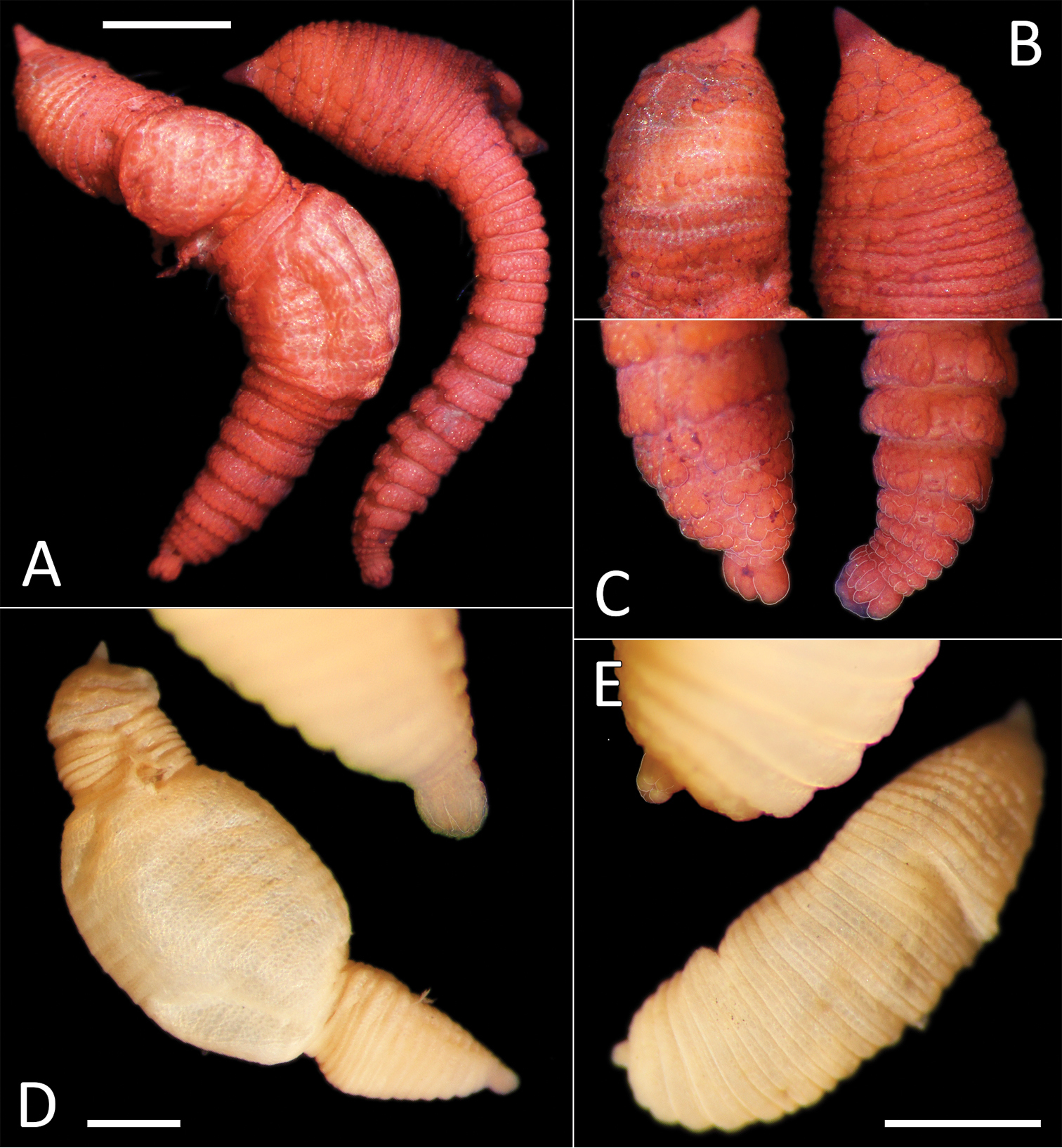
|
||
|
Comparison between Travisia sp. NHM_1244 and Travisia zieglerae sp. nov., and holotypes of Travisia glandulosa (BMNH 1921.5.1.2431) and Travisia gravieri (BMNH 1921.5.1.2429). A Lab images, whole specimens (Travisia sp. NHM_1244 specimen NHM_1863 [left], Travisia zieglerae sp. nov. holotype [specimen NHM_1431] [right], stained,) B Lab images, comparison of prostomia (Travisia sp. NHM_1244 specimen NHM_1863 [left], Travisia zieglerae sp. nov. holotype [right], stained) C Lab images, comparison of pygidia (Travisia sp. NHM_1244, specimen NHM_1863 [left], Travisia zieglerae sp. nov. holotype [right], stained) D Travisia glandulosa holotype, with detail of pygidium E Travisia gravieri holotype, with detail of pygidium. Morphological features in plates C–E have been outlined with a very fine white line to improve clarity of those features. Scale bars: 1 mm (A, D, E). |